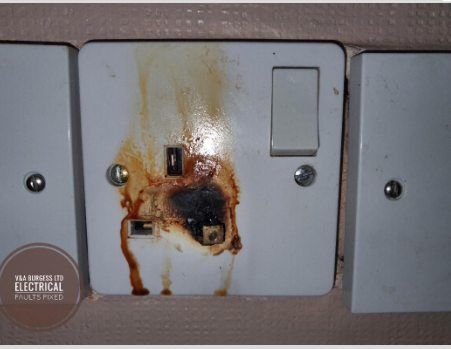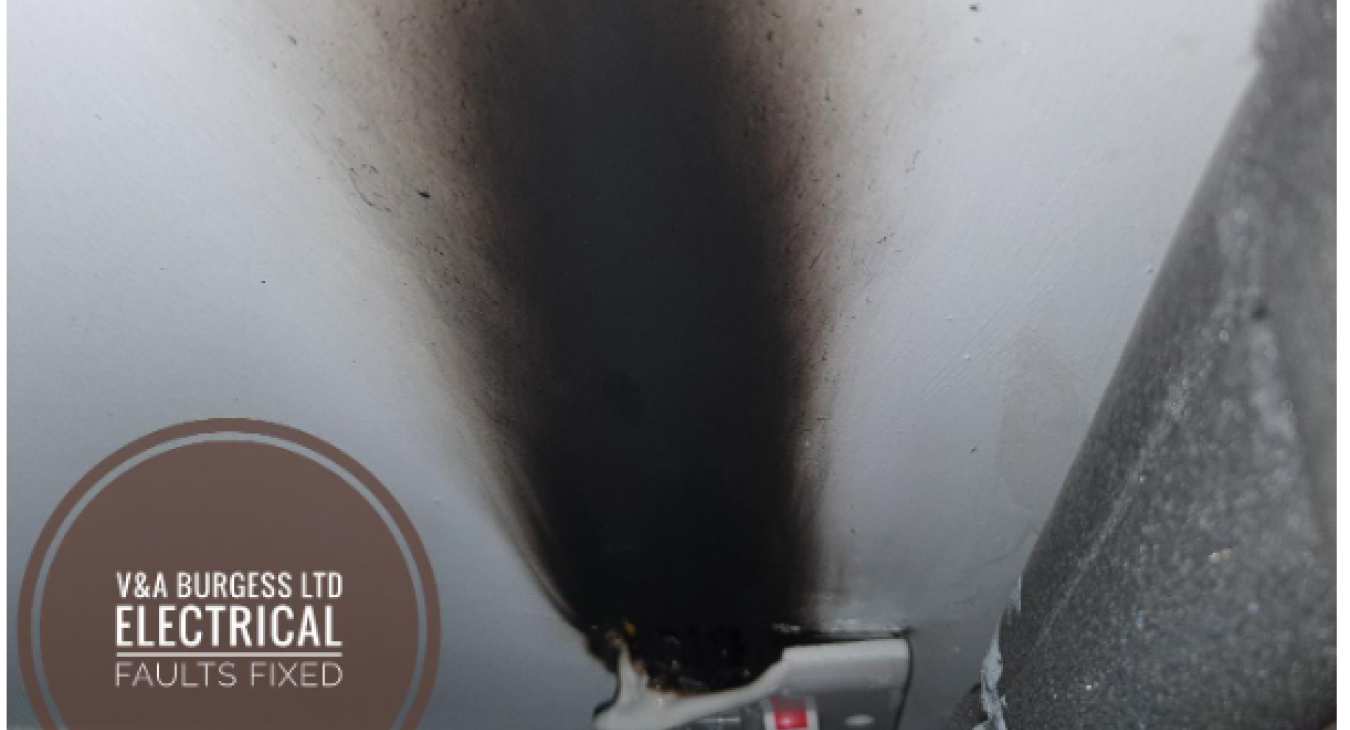Wherever there is electrical equipment, there will nearly always be some form of heat generated no matter how small. In some cases, we actually want the electrical equipment to produce heat if that is its intended purpose such as space heaters. In other cases, heat is an unwanted side effect of electrical equipment in normal operation such as the use of computer equipment and in extreme cases, heat can indicate serious electrical faults in equipment that should not normally generate high temperatures. CAN HEAT COME FROM ELECTRICAL EQUIPMENT? Yes, absolutely, but in many cases, the heat is unwanted! We will look at different appliances, types of equipment and situations where electrical equipment produces heat.
Table of Contents
- Understanding How Electrical Equipment Produces Heat
- Electrical Equipment for Heating
- Electric Radiators and Convectors
- Electric Infrared Heating
- Heat Pumps, Air Source and Ground Source
- Unwanted Heat where electrical equipment generates heat as a by-product
- LED Lighting vs. Incandescent Bulbs
- Electrical Equipment That Should Never Be Hot
- Summary
1) Understanding How Electrical Equipment Produces Heat
Electrical resistance is necessary in order to prevent short circuits and serious risk of electrical fires. Electrical resistance is found in all electrical appliances or items that plugs in or are connected to the electrical supply. It is necessary in order for appliances to work correctly and to enable the appliance to perform its intended task. Resistance comes in the form of resistors in circuit boards, heating elements, capacitors, and other essential electrical components.
Where there is electrical resistance, electrical current flow is impeded. This impedance to current flow prevents electrons from flowing quickly and freely, when this happens the energy that the electrons had as electrical kinetic energy is converted into heat energy. This energy conversion into heat means that every electrical item will develop some level of heat build-up.
2) Electrical Equipment for Heating
Where appliances are specifically designed for heating a space, we want as much of the electricity entering the appliance to convert to heat thus making the appliance as efficient as possible. Heating elements are specifically designed for this purpose having a high resistivity (resistance to current flow) and extremely high efficiency. Typical applications include water heaters, space heaters, other electric heaters, and electric oven elements.
Back to top3) Electric Radiators and Convectors
Electric radiators use convection to heat up a room. Convection is a process whereby air is moved throughout an area due to temperature differences. Radiators achieve this in a room through the warm air that moves upwards towards the ceiling from the radiator. The air then travels across the ceiling and higher areas of the room before gradually cooling and dropping as the air loses its energy.
Back to top4) Electric Infrared Heating
Unlike typical radiators that heat the space by convection which can leave cold spots and feel draughty, infrared heating is a type of radiant heating. The heater converts the electrical energy into infrared radiation. This type of heating is similar to the sun whereby if you stand outside on a cold day in full sunlight you will feel warmer than the surrounding environment.
Infrared radiation uses different wavelengths of infrared to transfer energy. The energy hits objects and walls heating them directly without heating the air around them and is generally more efficient than convection heating. Some forms of infrared heating will glow red as the waves can be seen as light. These types of infrared heater use near infrared wavelengths of between 0.7 and 3.0 micro meters. Far infrared light cannot generally be seen and therefore it is more suited to discreet heating systems in homes.
Back to top5) Heat Pumps, Air Source and Ground Source
Heat pumps are becoming one of the most popular forms of heating technology in 2024. There are two different types, the air source heat pump (ASHP) and ground source heat pump.
Air source heat pumps use the heat from the outside air (even when it’s cool air) to turn refrigerant into a gas. The gas is then compressed increasing its temperature greatly. The heat energy is then transferred through a heat exchanger to warm up water which is pumped around your home's radiators. The temperature difference ASHP can achieve is quite incredible which makes them extremely efficient.
Ground source heat pumps use the radiant heat from the ground. Pipework is installed in the ground and water and antifreeze mix is pumped through the pipes taking heat from the ground and passing it into a heat exchanger. A refrigerant absorbs the heat and is turned into a gas. The gas is then compressed to increase its temperature greatly. A secondary heat exchanger transfers the heat from this hot refrigerant gas into the water that flows through radiators and pipework in our homes. This gives us hot water and heating.
Both ASHP and GSHP are very efficient but each has benefits and drawbacks and if considering an installation, you should speak with your local specialist to decide which is best in your circumstances.
6) Unwanted Heat where electrical equipment generates heat as a by-product
There are many electrical devices that generate heat as a byproduct of their normal operation. The amount of heat generated will depend upon the type of electronic equipment or electrical appliances and their volume of use.
Computers and games consoles generate a great deal of heat through normal use and require cooling fans or cooling systems in order to prevent excessive heat gain within the components.
Appliances that contain electric motors can generate heat through changing magnetic fields that generate eddy currents, friction through moving parts and electrical cables that warm up during use.
Transformers for phone chargers, doorbell supplies, low voltage lighting and other equipment will generate heat. Typically, around 97-99% efficient which is actually incredible but nevertheless, the remaining wasted energy is converted into sound and heat making them one of the electrical items that produces heat as a by-product.
If heat is also accompanied by an electrical burning smell then shut off appliances or turn off the switch at the electrical panel or consumer unit and call an electrician for assistance.
7) LED Lighting vs. Incandescent Bulbs
The incandescent light bulb uses a tiny wire called an electrical filament. The idea being that the filament glows white hot when electrical current is passed through it to provide light and, unfortunately, a great deal of heat too! LED light bulbs produce a similar intensity of light with around 10 to 25% of the electrical current needed compared with incandescent light bulbs.
LED lamps and light bulbs do still produce unwanted heat but are far more efficient with less wasted energy than traditional lighting.
8) Electrical Equipment That Should Never Be Hot
There are some types of electrical equipment that should never be hot and any heat is a sign that things are not quite right and potentially dangerous.
Circuit breakers in an electrical panel or consumer unit should not be hot and when they are it is a sign that too much electrical current is flowing through the device, connections may be loose or high internal resistances are present as a result of corrosion or deterioration in the device.

Plug socket outlets should also never be hot to the touch. Whilst these electrical accessories may warm up slightly in normal use, too much heat or extreme heat is an indication that there is a poor connection or internal high resistance. This situation can cause significant damage to the plug socket, melt the plastic material around the socket and reduce its service life.
Electrical cables should also never become hot. Where wiring is overloaded, it may result in exceeding its maximum operating temperature (typically 70 degrees centigrade for thermoplastic PVC cabling). If you find that there is a large temperature rise in cabling, sockets, or circuit breakers it may lead to faulty wiring, trip switch failures and damage to the home's electrical system. Ignoring overheating in the electrical system can lead to electrical fires.
Back to top9) Summary
CAN HEAT COME FROM ELECTRICAL EQUIPMENT? The answer is yes, always, although it may not be expected, wanted, or preferred.
Where electrical heating devices are used as a heat source to warm spaces in our homes, care should be taken not to overload plug sockets as this can result in a burnt or melted plug socket. Where equipment is intended to create heat as a by-product of normal operation, care should be taken to allow adequate space and air flow around the equipment for heat dissipation. Failure to do so could result in a fire hazard. Some electrical components and equipment should never be hot and where temperature ranges exceed the normal allowable levels for those devices, they are likely to faulty.
Back to top
Read more articles
- Log in to post comments


